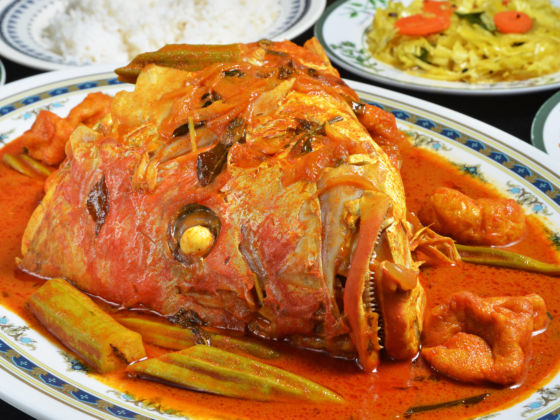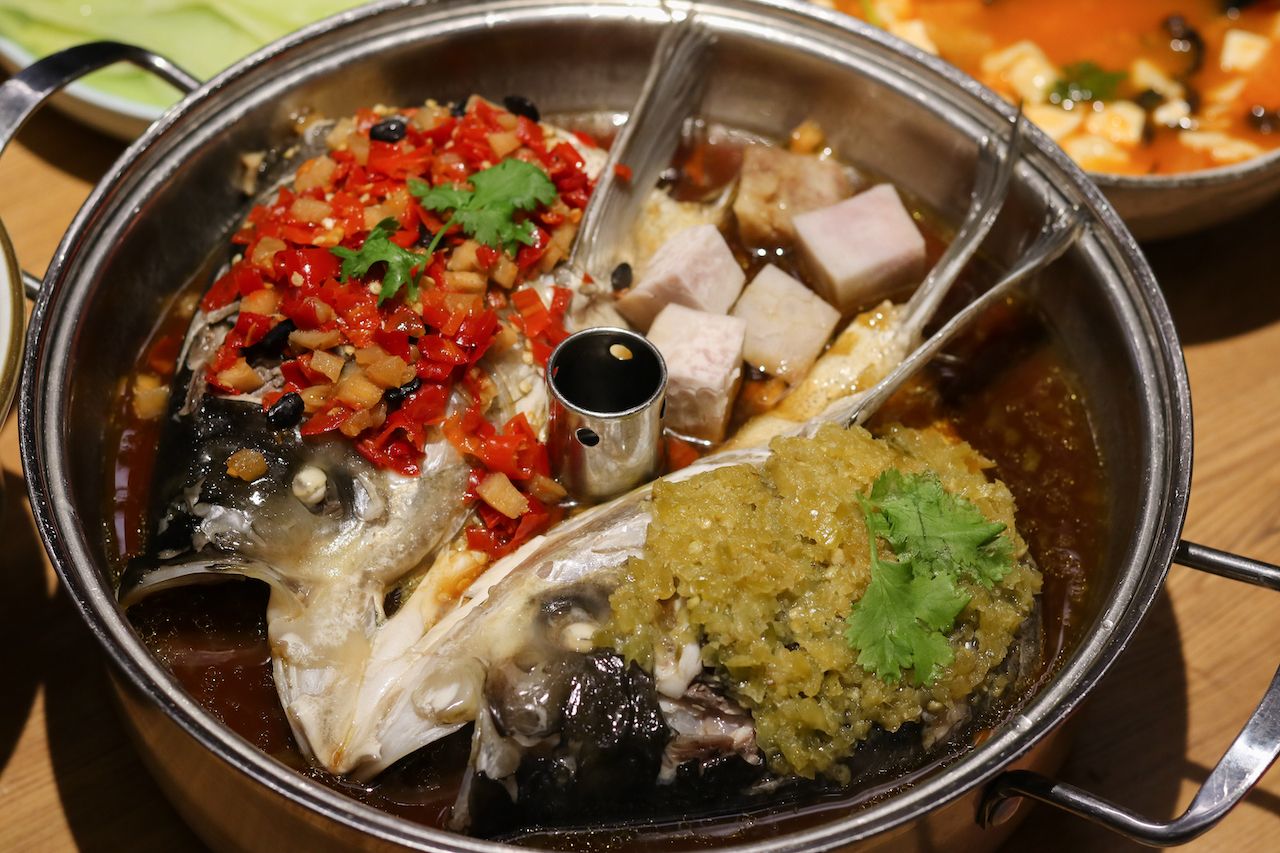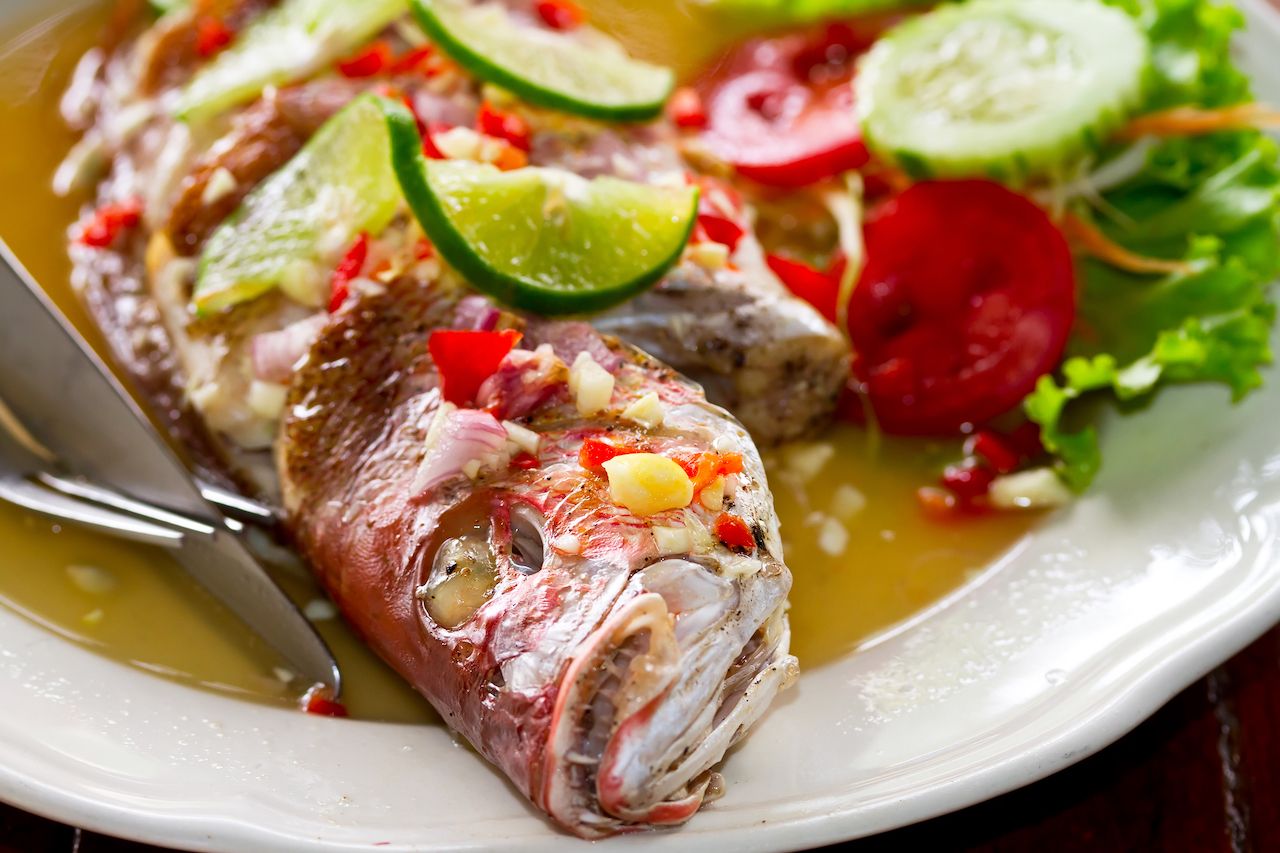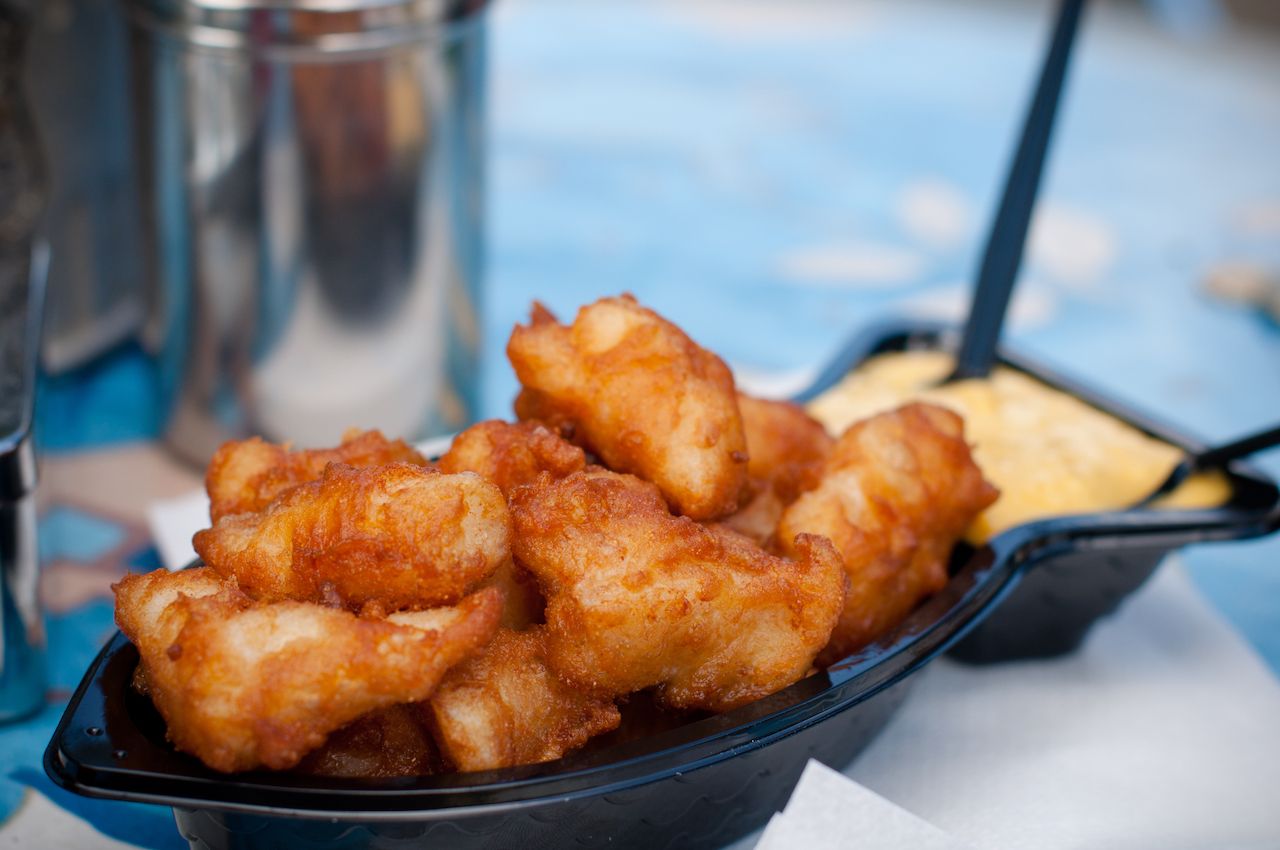If you’ve only ever ordered a filet of fish because tiny bones or beady eyes freak you out, you are seriously missing out on one of the tastiest, most delicate parts of the fish: the head. Cheeks are lined with tender meat, the skull is filled with emollient fat, and well-cooked cartilage is brittle and crispy. An elaborately prepared fish head dish makes a grand centerpiece on the dinner table.
The case can also be made for eating fish heads from a nutritional and environmental perspective. The bones, flesh, and fat on fish heads contain high levels of vitamins, healthy fatty acids, and minerals. Consuming fish heads also benefits the environment by reducing waste and pollution from fish processing facilities. Take some inspiration from these cuisines from around the world.




